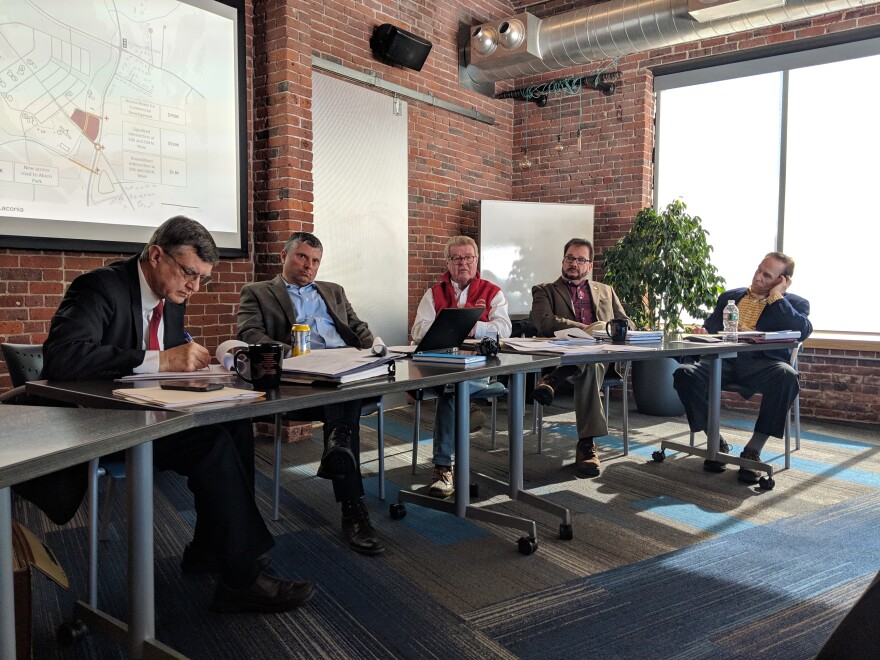A plan to redevelop the former Laconia State School property into a potential mixed-use complex won't be as environmentally complex as expected – but will still require a lot more study before moving forward.
For decades, the sprawling, scenic Laconia State School was a home for people with developmental disabilities, and had a history of neglect and abuse.
It later became a state prison – the Lakes Region Facility – before closing in 2009.
The dilapidated structures left on the now mostly abandoned property are full of mold, asbestos and lead paint, with signs on their doors reading “environmental hazards – no entry allowed.”
These structures will need extensive remediation before any demolition or reuse is decided.
But at a meeting Thursday of the commission tasked with studying those decisions, contractor Tim Andrews said they haven't found many other hazards in the property's soil or groundwater.

"This is great news,” Andrews said, and then repeated it at the request of acting commission chair Bob Cheney, to laughter. “This is great news, this is great news."
The commission is still considering how to flip the property.
Their top option is a mixed-use development, with a range of affordable housing options, a wellness center, commercial space, a hotel and events center using historic buildings, open space and a sports complex.
A final study from one of the commission’s contractors says that plan could bring in around $2.7 million in additional property tax revenue, and create around 1,700 jobs with millions in additional sales and earnings.
Next, the commission plans to fund a study of the specific market demand for a sports complex. They’re also discussing priorities for upgrading road and utility infrastructure at the property.
And Cheney says there’s a lot more archaeological and environmental surveying to be done – plus other challenging questions to address.

"How you go from this being state-owned property to some sort of – maybe other people own the property at the end of the day – that's going to take some thought,” Cheney said.
He says the commission requested $1.7 million in the next state budget to continue their work over the next two years.
A large portion of that would cover additional studies of the property’s boundaries, hazardous materials in its buildings, and ways to better connect it to adjacent Ahern State Park.
The state legislature will decide on the property’s future based on the commission's eventual recommendations.
There’s no hard deadline for their report.








